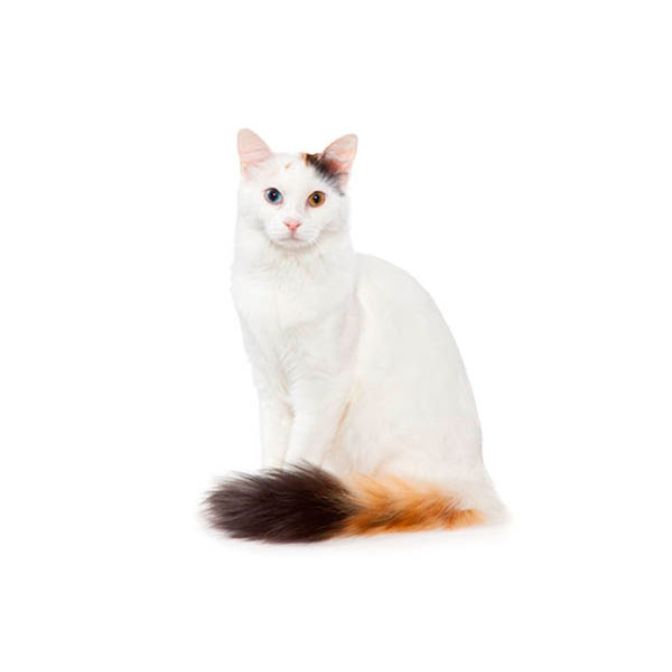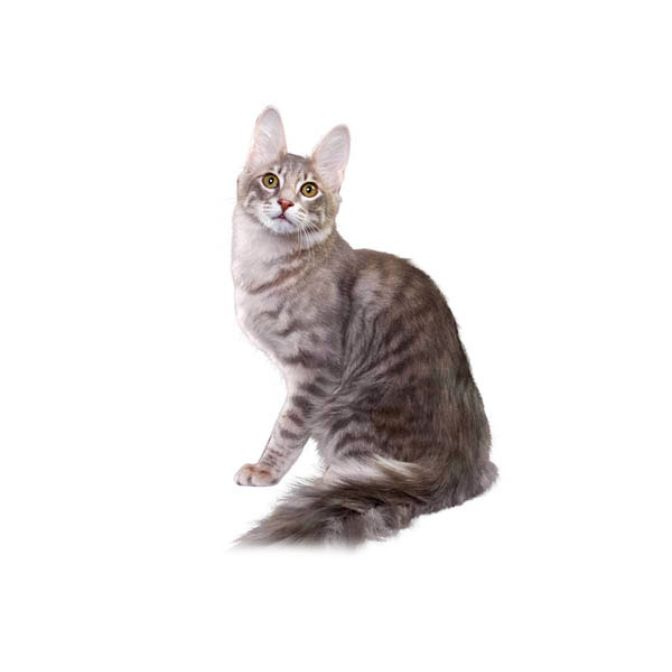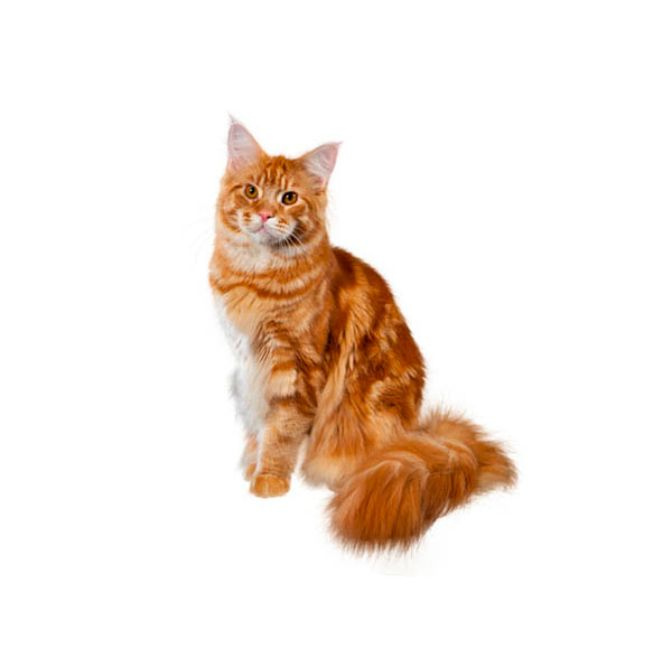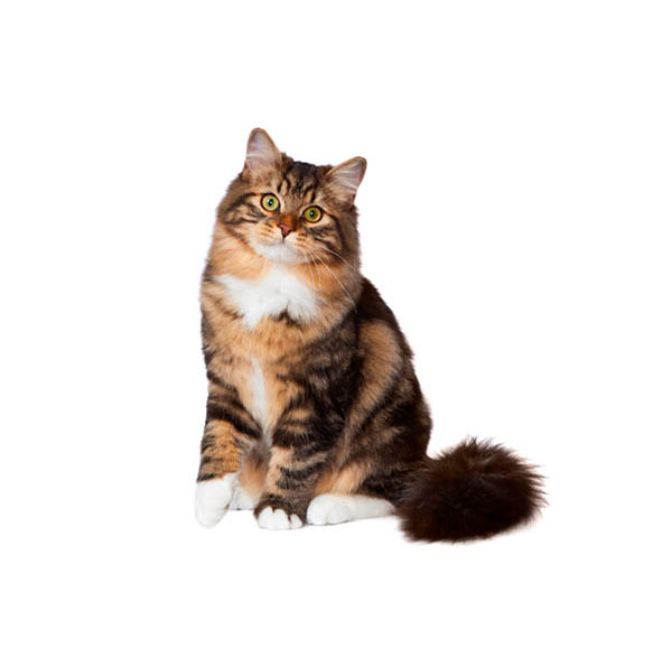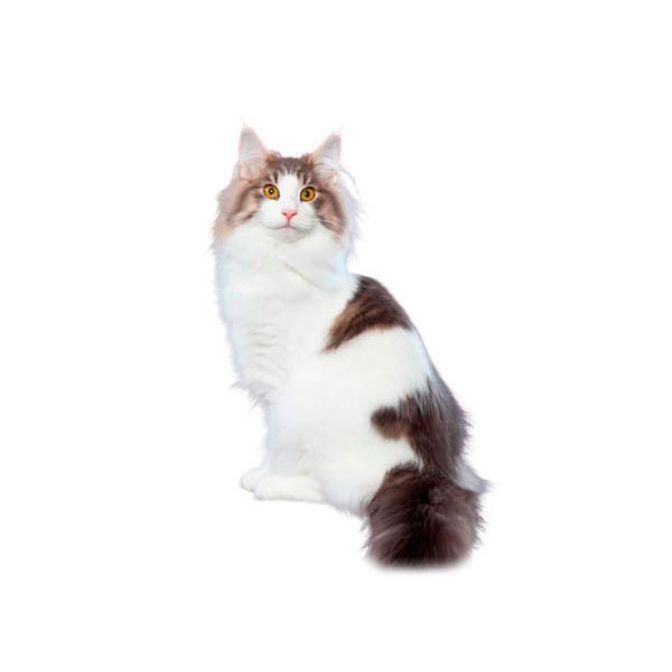Turkish Van
The beautiful Turkish Van is distinguished by her chalk-white body and colored markings on the head and long, plumed tail. This curious feline has powerful hind legs that allow her to jump on otherwise hard-to-reach spaces. The sweet, loving breed likes to be involved in whatever is going on and enjoys curling up on a lap. A slow-maturing breed, the Turkish Van takes three to five years to reach maturity.
Medium To Large
Semi Long
High
3 to 8.5kg.
Red, cream, black, blue, red tabby, cream tabby, brown tabby, blue tabby, tortoiseshell, dilute tortoiseshell, brown patched tabby and blue patched tabby
Turkish Vans are extremely intelligent and friendly and they make excellent companions. They have quiet soft voices and are happy to be indoor cats provided they are given plenty of company and are kept amused.
They are lively cats and will enjoy playing games with humans or other cats. They do like water and may like to take a dip in the bath if no pool is available! Because of the Van's affinity with water, safety is particularly important.
The Turkish Van is a large muscular yet elegant cat with a white body and distinctively coloured head and tail. The breed does not mature completely until about three or four years of age. The cats are well balanced and proportioned and strong in appearance with no exaggerated features.
The head is a broad wedge shape with a medium to long nose, which, in profile, shows a very slight dip. The large ears are set high on the head and close together. The eyes are large, oval and expressive.
The body is long and sturdy with a broad, muscular chest and this is more noticeable in the males. The legs are medium in length and the paws are round and neat and tufted. The tail has a full brush and balances the body in length.
12 to 14 years.
The Turkish Van’s coat is long soft and silky with no woolly undercoat. The winter coat is longer and heavier than the summer and the ruff around the neck and chest becomes fuller with age. The body of the cat is predominately chalk white with no yellowing.
There are coloured markings on the head but these do not extend below the level of the eyes or the base of the ears at the back. The colouring on the head is separated by a vertical white blaze. The tail is coloured and may show some faint rings, which are more prominent in kittens, and the colour on the tail may extend a short way up the back.
Occasionally small thumbprints of colour appear on the body of the cat and in the show cat these are undesirable although in an otherwise perfect specimen these may be forgiven by the judges Bi-colours: The Governing Council of the Cat Fancy recognises cats with auburn or cream markings, in each case with white. The eyes may be amber or blue or one of each. The nose leather and paw pads are pink. Vans may also be seen with black, blue, tortoiseshell or blue cream markings, but these are not recognised by the GCCF.
Turkish Vans do require regular grooming to keep their beautiful silky coat tangle free; it is best to do this on a daily basis as this avoids major tangles and matts. If grooming with a comb and brush is introduced at an early age the cat will soon become used to it and many potential problems will be avoided. If the Turkish Van is to be shown, a bath will probably be necessary to make sure his coat is sparkling white and again this is best started at an early age although their affinity with water is a great help!
The Turkish Van is quite a robust healthy cat as are most natural breeds of cat and is used in its native habitat to dealing with extremes of climate. Therefore it is likely to have a long healthy active life but it is a wise precaution to have an annual health check from about the age of eight or nine years to check teeth and kidney and liver function.
The Turkish Van is an active cat and will require approximately 80 Kcals of food per kg of bodyweight per day. Although not particularly prone to obesity it is wise to keep an eye on their diet.
The most amazing characteristic of the Turkish Van cat is its affinity to water. It not only likes water but also actually enjoys a swim. They originate from the area surrounding Lake Van in Turkey and have been domesticated there for hundreds of years.
In the 1950’s a pair of Turkish Vans were brought back to Britain by a holidaying couple and they began to breed these distinctively marked cats. The cats bred true and more Turkish stock was introduced and a breeding programme was started. They had gained official recognition and cats were exported to the US and Australia where they have also gained in popularity.
The Turkish Van is a rare, ancient breed that developed in central and Southeast Asia, in areas known today as Iran, Iraq, southwest Soviet Union and eastern Turkey.
